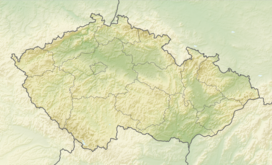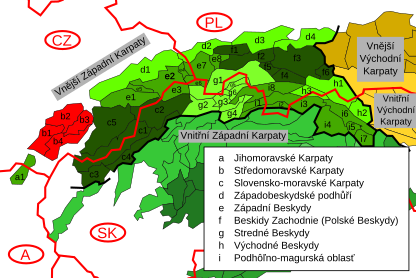Vyškov Gate


The Vyškov Gate (Czech: Vyškovská brána, Polish: Brama Wyszkówska, German: Wischau Pforte, Slovak: Vyškovská brána) is a geomorphological feature in the Moravia (Czech Republic). It is formed by the depression between the Western Carpathian Mountains in the east and the Bohemian massif (Drahanská vrchovina) in the west. The drainage divide between the upper River Haná to the River Morava of the Danube basin runs through it and Rakovec brook (in the Dyje–Svratka Valley). The gate is between the Upper Morava Valley (in the north-east) and the Dyje–Svratka Valley (in the south-west), all in Outer Subcarpathian depression.
Including low watershed (drainage divide) Na hanácké – 339 m
The Vyškov Gate has been a natural pass between the Bohemian-Moravian province (Bohemian Massif) – Bohemian-Moravian Highland and the Carpathians (Chřiby) since ancient times. Here ran the most important trade routes from southern Europe to the Baltic Sea (e.g. the Amber Road) and also routes from Moravia to Upper Silesia and Lesser Poland. Today the D1 motorway leads from the Moravian capital Brno to Ostrava, the centre of the Moravian-Silesian Region. The Austrian Northern Railway (one part) built in 1869 from Brno to Přerov and Ostrava also traversed the Vyškov Gate.
Gallery
- Haná River in Vyškov Gate
-
 Moravian Carpathians (marked in red) within the Outer Western Carpathian
Moravian Carpathians (marked in red) within the Outer Western Carpathian
See also
References
- ^ "About the Carpathians – Carpathian Heritage Society". Archived from the original on 6 April 2010. Retrieved 28 April 2010.













